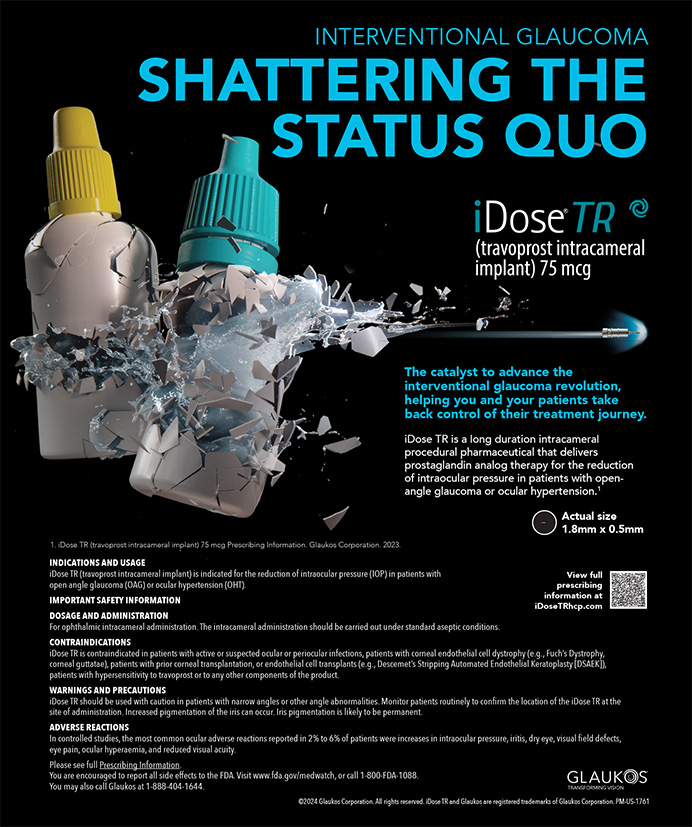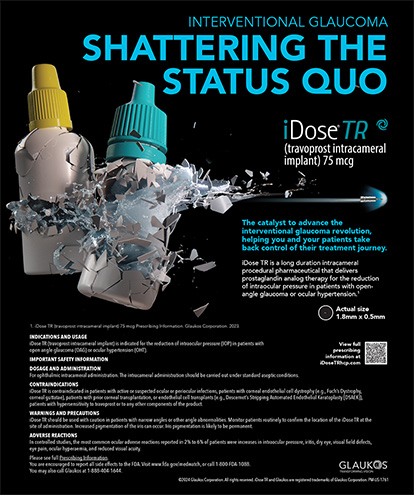Matching Potential Patients With Surgeons
By David Peskin
LASIK surgeons face many challenges today when reaching out to new customers. Poor consumer confidence in LASIK, a lack of knowledge about the procedure and its customizable treatments, plus a down economy have left many surgeons scratching their heads, trying to figure out how to reach patients who would benefit from their services.
Many surgeons sink money into costly TV and radio campaigns and billboards; they hope that their investment is worthwhile but never really know for sure if the return is enough. Others try to lure in patients with buy-one-get-one deals. The flood of advertisements in this medium can make for a garbled message to consumers. It makes them wonder whether LASIK is safe. Is it nothing more than a bargain-bin medical procedure? In this economy, do they need to splurge on such a luxury?
REVOLUTIONIZING LASIK
Surgeons are aware of the amazing advances in the LASIK procedure during the past decade alone, but the average citizen is still in the dark. Now is the time to revitalize the LASIK field and make the procedure more palatable to consumers. Surgeons need a cost-effective way to reach and educate patients that will not take time away from their practices. Ophthalmologists must also retain those patients.
It was with these thoughts in mind that I founded the Better Vision Network (BVN), a service that matches potential patients with a qualified, vetted surgeon in their area. Via a comprehensive website (www.bettervisionnetwork.com), BVN also educates consumers about every aspect of the LASIK procedure and its often life-changing results.
In short, BVN provides the advertising and educating of patients for surgeons. The service lets ophthalmologists concentrate on their practices rather than the chore of devising clever advertising campaigns or the decision whether to spend more money on lackluster billboards. BVN is the first service of its kind for the LASIK community. My hope is that our network will inject a shot of adrenaline into the industry, set a new standard for LASIK marketing, and shine a spotlight on a wonderful procedure that is often overlooked.
BVN screens surgeons, and if they are admitted into the network, they become part of a professional advertising campaign that features Olympic skier Lindsey Vonn as its spokesperson. BVN is a private label network, so surgeons are paying for the rights to license Lindsey Vonn and help build their practice's identity. The network allows member surgeons to go to work every day knowing that their practice is getting exposure and reaching potential patients in their area.
tips
It All Starts at the Front Desk
What most surgeons do not realize is that their front desk is critical to success. Although the phone may ring, if the front desk staff handles the calls improperly, it could end up costing the practice thousands of dollars. Time and time again, practices appear to put little effort into how their incoming calls are handled. This part of the practice deserves more attention.
Caliber of Advertising
Often, surgeons purchase advertising on the radio, in newspapers, and in magazines. I caution them to stay away from advertisements solely based on their price. A bargain advertisement may look good on the accounting books, but it could actually end up hurting surgeons in the long run.
If an advertisement looks cheap, it can downgrade the practice as well as the LASIK procedure itself. It does not matter if the practice has the most state-of-the-art technology. If a potential patient sees an advertisement and perceives it as cheap, he or she will see LASIK as something cheap. It is hard to reverse that initial impression once it is formed. Spending a few extra dollars to create a classy advertisement will help tremendously in the long run.
Educating Potential Patients Via a Website
To the average person, surgery is a scary word. Coupling it with the word eye could really frighten consumers. Surgeons can use their websites to educate patients about every aspect of LASIK surgery: the bladeless procedure, how short the surgery actually is, the incredibly quick recovery time, and the excellent results. Including this information online will not only trigger search engines to pick up the practice's site, it will set the practice apart from its competitors and allow potential patients to warm up to the practice before they even set foot through the door.
Patient-Tracking Software
Patient-tracking software like MDprospects (www.mdprospects.com; Glacial Multimedia) can help track every patient who comes to a practice. With this information, surgeons can instantly view who has been seen for a LASIK consultation but still has not booked surgery. Often, a gentle nudge is all a patient needs to set a date.
By presenting a unified message, choosing cost-effective advertising, and educating potential patients prior to their first appointments, surgeons will be able to reinvent the perception of LASIK.
David Peskin is the CEO of Better Vision Network. Mr. Peskin may be reached at (516) 342-4562; dpeskin@bettervisionnetwork.com.
Generation Y: Its Impact on Laser Vision Correction
By Colman R. Kraff, MD
The economic downturn of the past few years has had a tremendously negative impact on the laser vision correction (LVC) industry in the United States. As the uncertainties in the economies of the European Union continue, the adverse effect on the LVC industry is spreading throughout the world. Improvement in the economy would most certainly help stabilize and grow procedural volume in LVC, but many doubt that the volume can return to its peak years of 1.5 million procedures annually in the United States, before the Internet bubble burst. As the population and demographics of potential patients change along with their attitude toward LVC, can the industry be re-energized? The answer lies with Generation Y.
WHO MAKES UP GENERATION Y?
Generation Y comprises people born between 1978 and 2000. They are also called the millennial generation or echo boomers, and they are the children of the roughly 80 million baby boomers. Generation Y is 80 million strong and is the fastest-growing segment in the workforce, currently representing at least one-third of it. As a baby boomer retires, an echo boomer enters the workforce. To understand how this group influences the LVC industry and how to market to this demographic, it is important to know some of the characteristics that differentiate these individuals from their baby boomer parents.
Members of Generation Y are racially and ethnically diverse. They tend to be extremely independent, as they have often grown up with divorce, daycare, and single parents. The have been called “latch key kids.” Generally characterized by their extensive use of and familiarity with new forms of communication, media, and digital technologies, they are tech savvy and rely on technology to better perform their jobs. They are the first generation to grow up with computers in their homes and 500 channels on television. They are “plugged in” 24/7, and they like it that way! These individuals prefer to communicate via e-mail and text messages rather than by direct contact or voice communication.
HOW DO THEY THINK?
At work, members of Generation Y prize fewer hours and flexible schedules but with a higher salary than their predecessors, and their loyalty to their jobs is somewhat weak: they tend to switch often and spend their 401(k) savings when they leave their positions. As children, they were pampered by their parents and are not afraid to question authority. Generation Y members are quite liberal in their approach to economics and politics and, as a result, often seek jobs that are culturally meaningful and lack a conventional hierarchy.
In a recent survey of Generation Y regarding how the current economy is affecting its members, 61% said they were covered by a health plan, 70% said they were not saving money for the future, and 43% responded that they had too much credit card debt. The average college graduate carries $23,000 in student loan debt. Nonetheless, 25% said they would spend more in the current year than the previous year, demonstrating an attitude of “get now pay later,” and they generally have a positive outlook on the future.1
How can this group re-energize the LVC market?
The sheer size of this group is the most obvious factor in its ability to re-energize the LVC market. Almost 3 to 4 million potential patients enter the eligible pool each year and will continue to do so at this rate for the next 15 years. The percentage of individuals in this group who will need glasses or contact lenses for vision correction will mirror normal demographics. There is a significant difference in how the Generation Y population perceives LVC— which has now been around for 2 decades—compared with Generation X and baby boomers. The attitude of Generation Y is that the procedure is a rite of passage. When these potential patients reach their 20s, the issues that prevented many of their parents from having LVC (new technology, fear, and cost) are not obstacles anymore. Millenials think of laser ablation as an acceptable, safe alternative to traditional options for vision correction. They know someone who had LVC; they know it is safe. The issue becomes whether or not they qualify.
In my practice, the conversion rate of Generation Y candidates to surgery is 30% to 35% higher than that of baby boomers. If the millenial qualifies, he or she is having LVC!
My colleagues and I have observed a demographic shift in our practice during the past 24 months. Anywhere from 65% to 75% of the patients we see for LVC consultations are between 25 and 35 years of age. This has resulted from population changes and a significant alteration in our marketing focus.
Reaching Generation Y means directing marketing efforts where these potential patients spend their time. They do not watch commercials or testimonials on television. If they watch television, they do it on their schedules and fast forward through the commercials with the DVR. They read reviews on Yelp! (popular in our market) and similar sites when they want to find a surgeon. They get referrals from friends on social media sites and would rather make contact for an appointment through a digital portal than a website.
For these reasons, we have almost completely eliminated traditional media like radio, TV, and conventional print from our external marketing efforts. Our focus is now on the digital and social media space.
CONCLUSION
This article describes where Generation Y is today. The problem is that this group will be somewhere else tomorrow. The challenge for refractive surgeons is to reach tomorrow with Generation Y to keep the LVC market energized and growing.
Colman R. Kraff, MD, is the director of refractive surgery at the Kraff Eye Institute in Chicago. Dr. Kraff may be reached at (312) 444-1111; ckraff@kraffeye.com.
- MetLife Mature Market Institute. Demographic profile. America's Gen Y. http://www.metlife.com/assets/cao/ mmi/publications/Profiles/mmi-gen-y-demographic-profile.pdf. Published 2010. Accessed June 19, 2012.


